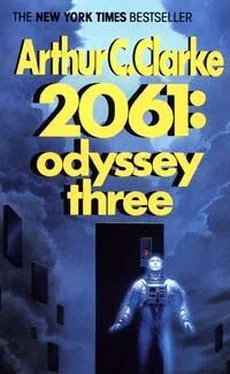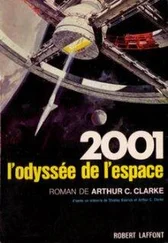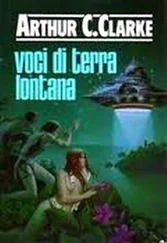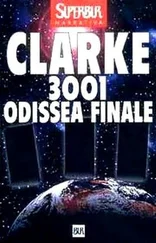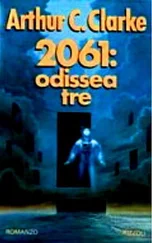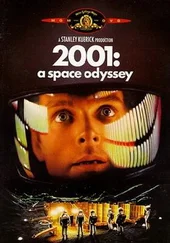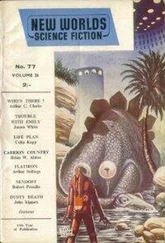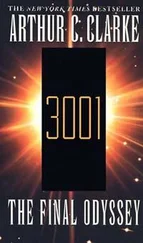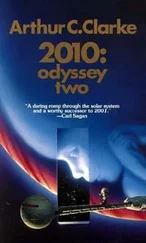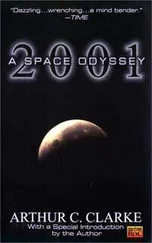'And all these wonders were destroyed – to create Lucifer?'
'Yes. The Jovians were weighed in the balance against the Europans – and found wanting. Perhaps, in that gaseous environment, they could never have developed real intelligence. Should that have doomed them? Hal and I are still trying to answer this question; that is one of the reasons why we need your help.'
'But how can we match ourselves against the Monolith – the devourer of Jupiter?'
'It is only a tool: it has vast intelligence – but no consciousness. Despite all its powers – you, Hal and I are its superior.'
'I find that very hard to believe. In any event – something must have created the Monolith.'
'I met it once – or as much of it as I could face – when Discovery came to Jupiter. It sent me back as I am now, to serve its purpose on these worlds. I have heard nothing of it since; now we are alone – at least for the present.'
'I find that reassuring. The Monolith is quite sufficient.'
'But now there is a greater problem. Something has gone wrong.'
'I did not think I could still experience fear...'
'When Mount Zeus fell, it could have destroyed this whole world. Its impact was unplanned – indeed, unplannable. No calculations could have predicted such an event. It devasted vast areas of the Europan seabed, wiping out whole species – including some for which we had high hopes. The Monolith itself was overturned. It may even have been damaged – its programs corrupted. Certainly they failed to cover all contingencies; how could they, in a Universe which is almost infinite, and where Chance can always undo the most careful planning?'
'That is true – for men and monoliths alike.'
'We three must be the administrators of the unforeseen, as well as the guardians of this world. Already you have met the Amphibians; you have still to encounter the Silicon-armoured tappers of the lava streams, and the Floaters who are harvesting the sea. Our task is to help them find their full potential – perhaps here, perhaps elsewhere.'
'And what of mankind?'
'There have been times when I was tempted to meddle in human affairs – but the warning that was given to mankind applies also to me.'
'We have not obeyed it very well.'
'But well enough. Meanwhile there is much to do, before Europa's brief summer ends, and the long winter comes again.'
'How much time do we have?'
'Little enough; barely a thousand years. And we must remember the Jovians.'
60 – Midnight in the Plaza
The famous building, towering in solitary splendour above the woods of central Manhattan, had changed little in a thousand years. It was part of history, and had been reverently preserved. Like all historic monuments, it had long ago been coated with a microthin layer of diamond, and was now virtually impervious to the ravages of time.
Anyone who had attended early meetings of the General Assembly could never have guessed that more than a thousand years had passed. They might, however, have been intrigued by the featureless black slab standing in the Plaza, almost mimicking the shape of the UN building itself. If – like everyone else – they had reached out to touch it – they would have been puzzled by the strange way in which their fingers skittered over its ebon surface.
But they would have been far more puzzled – indeed, completely overawed – by the transformation of the heavens.
The last tourists had left an hour ago, and the Plaza was utterly deserted. The sky was cloudless, and a few of the brighter stars were just visible; all the fainter ones had been routed by the tiny sun that could shine at midnight.
The light of Lucifer gleamed not only on the black glass of the ancient building, but also upon the narrow, silvery rainbow spanning the southern sky. Other lights moved along and around it, very slowly, as the commerce of the Solar System came and went between all the worlds of both its suns.
And if one looked very carefully, it was just possible to make out the thin thread of the Panama Tower, one of the six umbilical cords of diamond linking Earth and its scattered children, soaring twenty-six thousand kilometres up from the equator to meet the Ring around the World.
Suddenly, almost as swiftly as if it had been born, Lucifer began to fade. The night that men had not known for thirty generations flooded back into the sky. The banished stars returned.
And for the second time in four million years, the Monolith awoke.
My special thanks to Larry Sessions and Gerry Snyder for providing me with the positions of Halley's Comet on its next appearance. They are not responsible for any major orbital perturbations I have introduced.
I am particularly grateful to Marvin Ross of the Lawrence Livermore National Laboratory, not only for his stunning concept of diamond-core planets, but also for copies of his (I hope) historic paper on the subject.
I trust that my old friend Dr Luis Alvarez will enjoy my wild extrapolation of his researches, and thank him for much help and inspiration over the past thirty-five years.
Special thanks to NASA's Gentry Lee – my coauthor on Cradle – for hand-carrying from Los Angeles to Colombo the Kaypro 2000 lap-portable which allowed me to write this book in various exotic and – even more important – secluded locations.
Chapters 5, 58 and 59 are partly based on material adapted from 2010: Odyssey Two. (If an author cannot plagiarize himself, who can he plagiarize?)
Finally, I hope that Cosmonaut Alexei Leonov has now forgiven me for linking him with Dr Andrei Sakharov (still exiled in Gorky when 2010 was jointly dedicated to them). And I express my sincere regrets to my genial Moscow host and editor Vasili Zharchenko for getting him into deep trouble by borrowing the names of various dissidents – most of them, I am happy to say, no longer imprisoned. One day, I hope, the subscribers to Tekhnika Molodezhy can read the instalments of 2010 which so mysteriously disappeared.
Colombo, Sri Lanka
25 April 1987 ( 1 )
1.Something strange has happened: I was under the impression that I was writing fiction, but I may have been wrong. For consider the following sequence of events:
1. In 2010: Odyssey Two the spaceship Leonov was powered by the Sakharov Drive.
2. Now, half a century later (Chapter 8), spaceships are powered by the muon-catalysed, 'cold fusion' reaction discovered by Luis Alvarez et al in the l950s. (See the autobiography Alvarez: Basic Books, NY, 1987.)
3. According to the London Times, 17 August 1987, Dr Sakharov is now working on nuclear power production 'based on... muon-catalysed, or "cold" fusion, which exploits the properties of an exotic, short-lived elementary particle related to the electron... Advocates of "cold fusion" point out that all the key reactions work best at just 900 degrees centigrade...'
I now await, with great interest, comments from Nobel Laureates Sakharov and Alvarez on the roles I have given them.
Arthur C. Clarke, 30 September 1987
